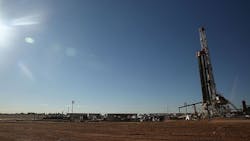OSHA is considering revising Table 1 of its Respirable Crystalline Silica Standard for Construction.
The agency is seeking comments and feedback on engineering and work practice control methods to effectively limit exposure to silica for the equipment and tasks. It is also requesting information about other construction equipment and tasks that generate silica that it should consider adding to Table 1, along with information about their associated engineering and work practice control methods.
Among the revision consideration is the revision of paragraph (a)(3) of the Respirable Crystalline Silica Standard for General Industry to broaden the circumstances under which general industry and maritime employers would be permitted to comply with the silica standard for construction as an alternative to the general industry standard.
Information submitted will allow OSHA to consider new developments and enhanced control methods for equipment that generates exposures to silica, and provide additional data on exposures to silica from equipment and tasks using a variety of control methods under different workplace conditions. Expanding Table 1 to include additional engineering and work practice control methods, equipment, and tasks could provide employers with more flexibility and reduce regulatory burdens while maintaining protections for employees.
If information submitted in response to this request indicates that revisions to the silica standards are needed, the agency will then publish the proposed revisions in the Federal Register for public comment.
Comments must be submitted by November 13, 2019. Comments and materials may be submitted electronically at http://www.regulations.gov, the Federal e-Rulemaking Portal, or by facsimile or mail. See the Federal Register notice for submission details.
Under the Occupational Safety and Health Act of 1970, employers are responsible for providing safe and healthful workplaces for their employees. OSHA’s role is to help ensure these conditions for American working men and women by setting and enforcing standards, and providing training, education, and assistance. For more information, visit www.osha.gov.
The mission of the Department of Labor is to foster, promote, and develop the welfare of the wage earners, job seekers, and retirees of the United States; improve working conditions; advance opportunities for profitable employment; and assure work-related benefits and rights.
# # #
About the Author
EHS Today Staff
EHS Today's editorial staff includes:
Dave Blanchard, Editor-in-Chief: During his career Dave has led the editorial management of many of Endeavor Business Media's best-known brands, including IndustryWeek, EHS Today, Material Handling & Logistics, Logistics Today, Supply Chain Technology News, and Business Finance. In addition, he serves as senior content director of the annual Safety Leadership Conference. With over 30 years of B2B media experience, Dave literally wrote the book on supply chain management, Supply Chain Management Best Practices (John Wiley & Sons, 2021), which has been translated into several languages and is currently in its third edition. He is a frequent speaker and moderator at major trade shows and conferences, and has won numerous awards for writing and editing. He is a voting member of the jury of the Logistics Hall of Fame, and is a graduate of Northern Illinois University.
Adrienne Selko, Senior Editor: In addition to her roles with EHS Today and the Safety Leadership Conference, Adrienne is also a senior editor at IndustryWeek and has written about many topics, with her current focus on workforce development strategies. She is also a senior editor at Material Handling & Logistics. Previously she was in corporate communications at a medical manufacturing company as well as a large regional bank. She is the author of Do I Have to Wear Garlic Around My Neck?, which made the Cleveland Plain Dealer's best sellers list.
Nicole Stempak, Managing Editor: Nicole Stempak is managing editor of EHS Today and conference content manager of the Safety Leadership Conference.
